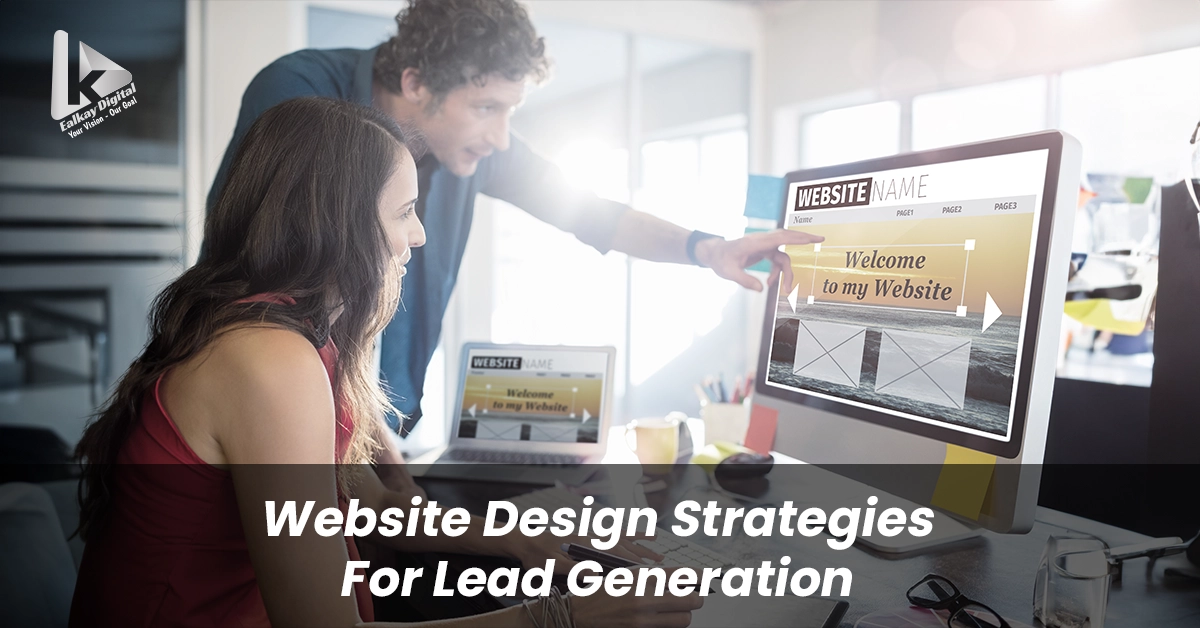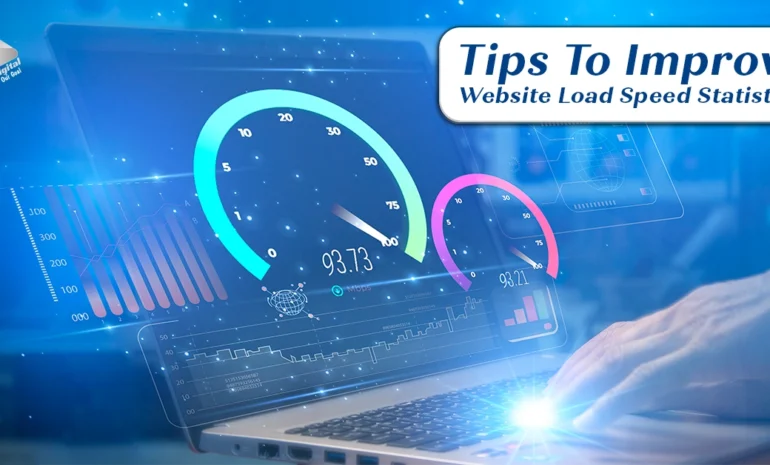B2B Website Design Essentials
In today’s digitally-driven marketplace, a well-crafted B2B website design is essential for businesses looking to attract and convert high-value clients. Your website is often the first point of contact prospective customers have with your brand, making it crucial to leave a lasting impression. But it doesn’t stop at just having an online presence; you need a strategy that effectively communicates your value, instills trust, and facilitates seamless interaction.
In this guide, we’ll delve into the key elements of B2B website design, exploring how to not only meet industry standards but exceed them, ensuring your website serves as a powerful tool for driving business success. Whether you’re starting from scratch or looking to enhance your existing digital footprint, this comprehensive resource will equip you with strategies quintessential to building a website that truly resonates with your target audience.
Why B2B Businesses Should Prioritize Website Strategies
B2B businesses must focus on effective website strategies to enhance customer engagement, boost visibility, and drive conversions. A well-designed website serves as a powerful tool for establishing brand authority and fostering lasting client relationships.
Navigating the B2B Digital Website Design Landscape
Navigating the B2B digital website design landscape requires a strategic approach to transform visitors into leads effectively. One crucial aspect is developing a robust content strategy that prioritizes high-quality content, tailored to meet the informational needs and preferences of B2B buyers. By doing so, you can enhance conversion rates and guide potential clients through the buyer’s journey seamlessly. Understanding your overarching business goals is key to aligning your website’s functionality and messaging with the expectations of your audience. Moreover, incorporating Search Engine Optimization (SEO) techniques will increase your online visibility, ensuring that your B2B web design attracts the right visitors who are more likely to become valuable leads.
How can you pinpoint your target audience in a B2B environment?
In a B2B environment, pinpointing your target audience is pivotal to crafting an effective website design strategy. Understanding who your ideal customers are allows you to curate relevant content that speaks directly to their needs and challenges, setting the foundation for strong user engagement and attracting qualified leads. By focusing on user-centric design, your website will not only captivate visitors but also decrease bounce rates by ensuring a seamless and intuitive user experience. This strategic approach enhances search rankings, as search engine algorithms favor websites that prioritize visitor satisfaction and high-quality interactions.
Consequently, your site’s improved search engine rankings will lead to increased visibility, drawing in potential customers and facilitating business growth. Ultimately, understanding and targeting the essential elements of your audience’s needs ensures that your website provides valuable content, fostering a pathway toward successful customer conversion and retention.
Defining a Buyer-Centric Website Design Approach
Defining a buyer-centric website design approach involves creating a platform that not only meets the aesthetic and technical specifications needed for a positive experience but also leverages effective SEO strategies. By incorporating visual appeal and interactive elements, you ensure that your B2B website is both engaging and easy to navigate, providing valuable insights that can influence purchasing decisions.
A seamless user experience is essential; therefore, a well-designed website must carefully consider keyword strategy to enhance search engine rankings and visibility. By integrating these elements into a buyer-centric approach, you ensure that the website not only attracts and engages your target audience but also retains them. This strategy ultimately facilitates a smoother path from visitor to customer conversion, maximizing the impact of your marketing efforts.
Charting the User Journey for Effective B2B Marketing
Charting the user journey is a crucial step in effective B2B marketing, as it enables businesses to leverage industry expertise and deliver actionable insights to their audience. By utilizing data-driven insights, B2B website design agencies can align their strategies with current industry trends and key performance indicators to create high-performing websites.
Understanding market trends allows designers to incorporate industry-specific language that resonates with potential clients, fostering stronger B2B relationships. Additionally, integrating social media elements within the website can enhance engagement and provide an avenue for sharing these insights, further establishing authority and value in the marketplace. Together, these components create a comprehensive approach to charting the user journey, ensuring that each interaction is meaningful and contributes to the overall success of the business.
Crafting a Clear Value Proposition by Addressing Audience Pain Points
Crafting a clear value proposition is central to effectively addressing audience pain points and establishing your business as an industry leader. By leveraging data-driven decisions, businesses can highlight customer logos that resonate with B2B audiences, showcasing a proven track record of solving common business challenges. Integrating relevant keywords into your website design strategy not only enhances search engine visibility but also speaks directly to the needs of B2B clients.
Key strategies should focus on understanding and reflecting the competitive market landscape, ultimately boosting customer engagement. By emphasizing how your solutions uniquely address client challenges, you strengthen your position in a crowded field, ensuring your value proposition is unmistakable and impactful.
Strategic Planning for High-Quality and Compelling Content
In strategic planning for high-quality and compelling content, the focus should be on content creation that prioritizes an informative approach to ensure a positive user experience. By incorporating visual elements and video content, businesses can maintain engagement while delivering valuable information.
It’s essential to monitor performance metrics as these key metrics provide insights into the success of the content strategy, helping to maintain a competitive edge. Furthermore, strategically placed calls to action can guide users through the website, encouraging desired behaviors. A strong balance of form and function in your content strategy will not only captivate the audience but also drive business results.
Integrating Brand Messaging with Effective Conversion Optimization Techniques for B2B Websites
Seamlessly merging brand messaging with conversion optimization elevates B2B websites by creating a cohesive narrative that resonates with visitors. Utilizing targeted calls to action and personalized user experiences can dramatically enhance conversion rates, ultimately driving more meaningful interactions and fostering long-term client relationships.
Optimizing for SEO: Achieving Success with SEO-Friendly Websites
Creating an SEO-optimized B2B website is crucial for visibility and success in the digital landscape. By using targeted keywords, optimizing site speed, and ensuring mobile compatibility, businesses can improve search rankings. This approach draws valuable traffic, helping to establish your brand’s authority and strengthen your market presence.
Emerging Trends and Continuous Improvement in B2B Website Design with A/B Testing and Heatmaps
Exploring emerging trends in B2B website design, such as personalization and AI-driven interfaces, is crucial for maintaining industry relevance. Implementing A/B testing and heatmaps empowers businesses to make data-driven decisions, continuously refining the user experience. This approach ensures websites remain effective and responsive to changing user expectations and technological advancements.
Key Elements of an Effective B2B Website Design Strategy
A well-structured sitemap is crucial for a seamless user experience on a B2B website. It not only guides visitors efficiently through the site but also improves navigation, making information easily accessible. By mapping out content logically, businesses can enhance user engagement and ensure a smooth, intuitive online journey for their audience.
Enhancing Lead Generation Through Intuitive Navigation
Improving lead generation on a B2B website hinges on intuitive navigation. By creating a seamless user journey, visitors can easily find the information they need, encouraging them to take the next step in the sales funnel. Clear pathways increase engagement and conversion rates by reducing friction and enhancing user satisfaction.
Ensuring Responsive Design and Mobile Optimization Techniques
Focusing on responsive design and mobile optimization is essential in today’s digital environment. A responsive B2B website ensures a seamless experience across all devices, accommodating varying screen sizes and user preferences. By prioritizing mobile optimization, businesses can reach a wider audience, improve engagement, and enhance overall user satisfaction.
Enhancing mobile responsiveness boosts conversion rate optimization, setting your B2B product apart from competitors. Clear technical language ensures prospects understand your offerings, enhancing appeal and maximizing engagement in the competitive business landscape.
Conversion Optimization Techniques: Leveraging Social Proof for Trust Building
Utilizing social proof in conversion optimization enhances trust and credibility. Showcasing customer testimonials, case studies, and industry endorsements reassures potential clients of your reliability, encouraging them to engage and convert. This strategy effectively builds confidence, fostering stronger business relationships and driving successful outcomes.
How To Measure The Success Of Your B2B Website Strategy
Evaluating the success of your B2B website strategy involves tracking key metrics like conversion rates, user engagement, and traffic sources. Regularly analyzing data through tools such as Google Analytics helps refine your approach, ensuring continued alignment with business goals and audience needs.
Common Pitfalls to Avoid in a B2B Website Strategy
Common pitfalls in a B2B website strategy include neglecting mobile optimization, complex navigation, and unclear calls-to-action. Ignoring these can lead to high bounce rates and poor user engagement. Ensure your strategy addresses these issues by prioritizing a user-friendly design, clear messaging, and seamless navigation to foster better interaction and conversions.
Aligning Your B2B Website with Emerging Trends and Business Objectives
Incorporating emerging trends into your B2B website design aligns it with evolving market needs and technological advancements. Regular updates ensure your site remains relevant, reflecting current industry standards while supporting your business objectives through enhanced user experience and innovative features.
Utilizing Analytics for Performance Tracking and Continuous Improvement
Incorporating analytics is essential for tracking performance and fostering continuous improvement on B2B websites. Share informative content, include customer success stories, and employ effective action buttons to guide potential buyers, ultimately enhancing Customer Relationship Management and playing a crucial role in conversions.
Conclusion: Ealkay Digital's Commitment to Crafting Exceptional B2B Website Design Strategies
 At Ealkay Digital, we are dedicated to helping your business thrive online by crafting effective B2B website design strategies. By understanding your unique goals and the market landscape, we tailor solutions that align with your business objectives and resonate with your target audience. With a focus on delivering innovative designs, seamless navigation, and impactful content, we ensure your digital presence drives engagement and conversion. Trust Ealkay Digital to transform your website into a powerful tool for growth and success.
At Ealkay Digital, we are dedicated to helping your business thrive online by crafting effective B2B website design strategies. By understanding your unique goals and the market landscape, we tailor solutions that align with your business objectives and resonate with your target audience. With a focus on delivering innovative designs, seamless navigation, and impactful content, we ensure your digital presence drives engagement and conversion. Trust Ealkay Digital to transform your website into a powerful tool for growth and success.











